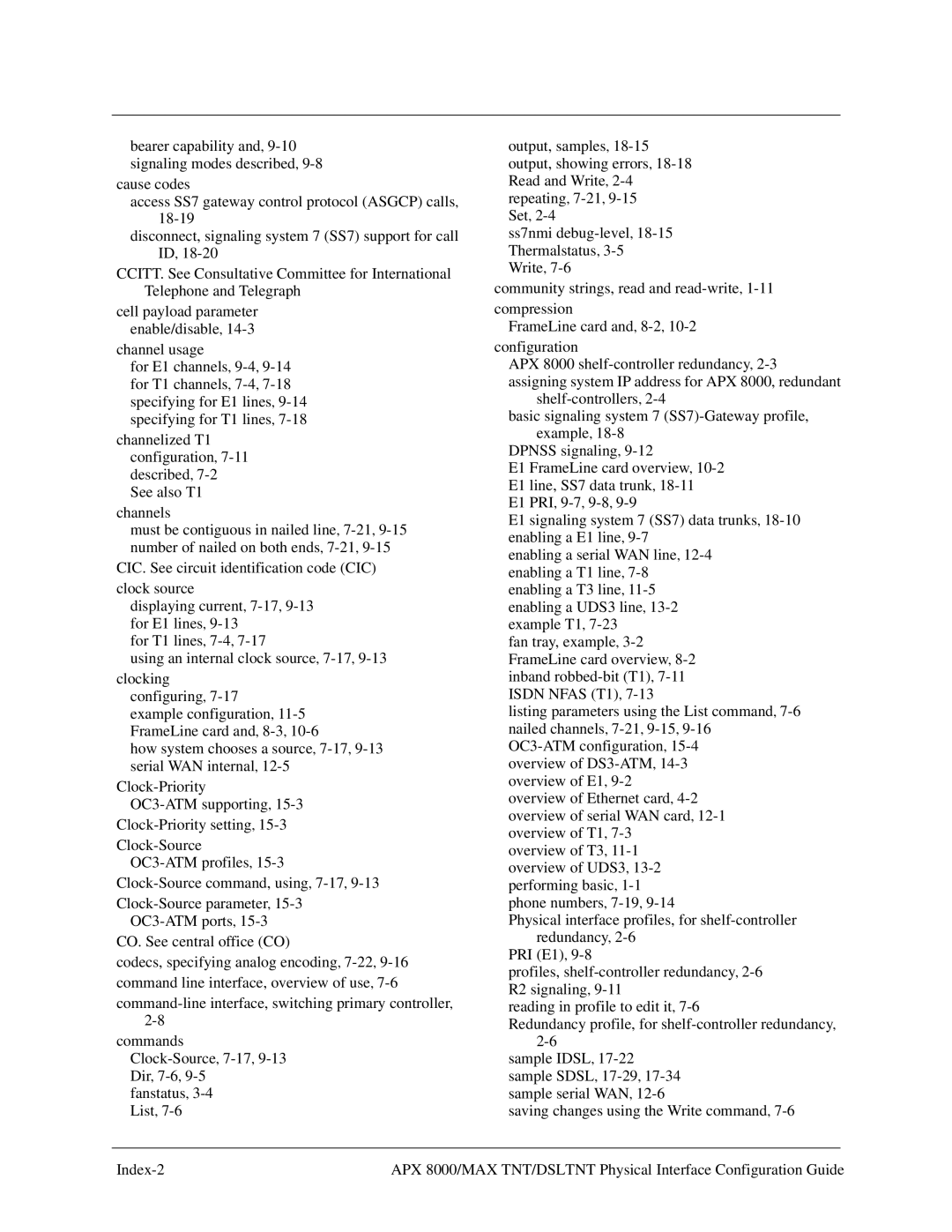
bearer capability and,
cause codes
access SS7 gateway control protocol (ASGCP) calls,
disconnect, signaling system 7 (SS7) support for call ID,
CCITT. See Consultative Committee for International Telephone and Telegraph
cell payload parameter enable/disable,
channel usage
for E1 channels,
channelized T1 configuration,
channels
must be contiguous in nailed line,
CIC. See circuit identification code (CIC) clock source
displaying current,
for T1 lines,
using an internal clock source,
configuring,
example configuration,
how system chooses a source,
codecs, specifying analog encoding,
commands
List,
output, samples,
Set,
ss7nmi
community strings, read and
FrameLine card and,
APX 8000
basic signaling system 7
DPNSS signaling,
E1 FrameLine card overview,
E1 line, SS7 data trunk,
E1 signaling system 7 (SS7) data trunks,
enabling a serial WAN line,
fan tray, example,
listing parameters using the List command,
overview of
overview of T3,
Physical interface profiles, for
PRI (E1),
profiles,
reading in profile to edit it,
Redundancy profile, for
sample IDSL,
saving changes using the Write command,
APX 8000/MAX TNT/DSLTNT Physical Interface Configuration Guide |
